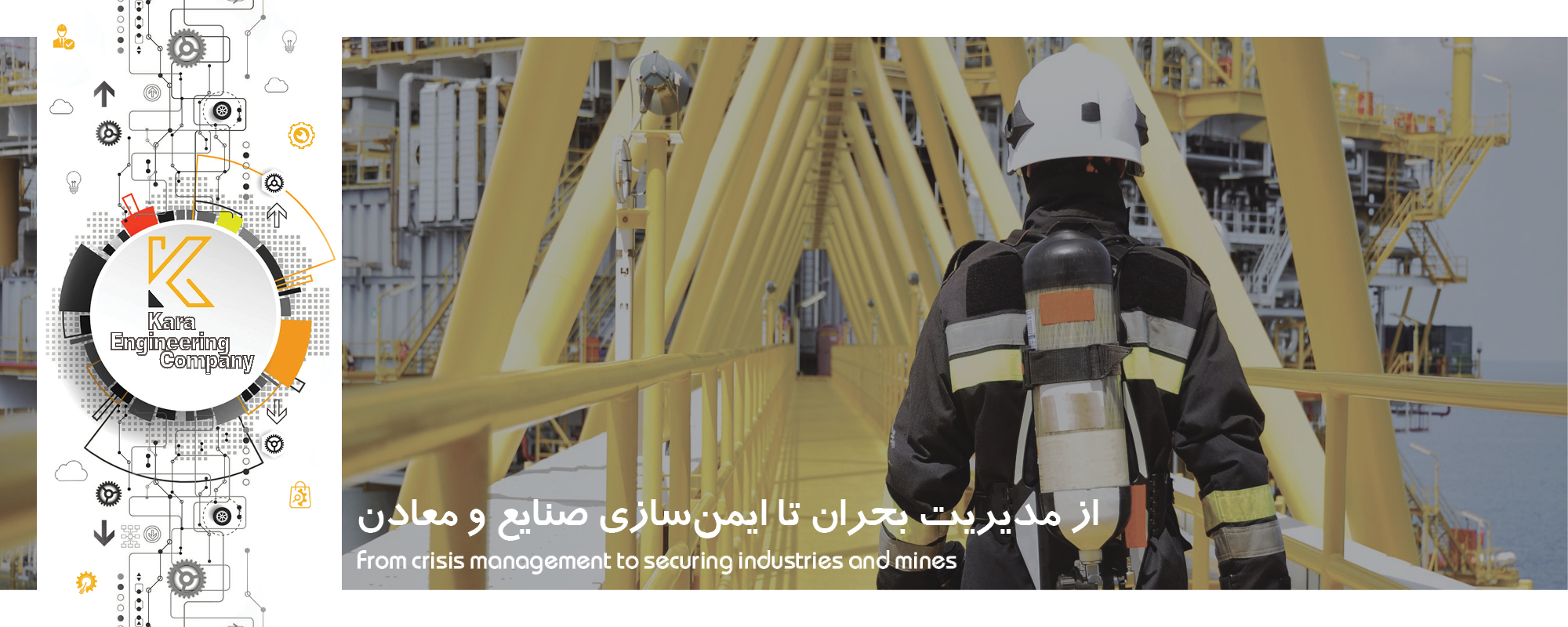
Today, many construction, production and economic activities, especially on a large scale, are carried out by contracting companies and subcontractors. With the increase in the number and volume of work and the speed of activities, as a result, work-related accidents also occur. In this regard, in order to protect the labor force and material and human resources, it is necessary to strictly implement the laws and regulations related to safety in the workplace and to coordinate and cooperate effectively between contractors, employers and workers.
For this coordination and cooperation between people, it is necessary to know what is safety culture?
Safety culture is a complex set of people's beliefs, knowledge and behaviors that keeps them safe from accidents and risks both in the work environment and in the living environment. Before entering the industrial environment, the safety culture must be established in the minds and thoughts of the people of every society, so that none of the people in the society are willing to expose themselves to dangers and unsafe conditions in their living and working environment. They can predict and prevent the possibility of an accident before it happens, and prevent the situation from getting worse when it happens.
In the general culture of the society, doing work unsafely and with high risk should never be considered as a normal thing, in this case we can hope that an action will be taken to correct unsafe things, otherwise it is very difficult to change unsafe behaviors. will be.
It is worth mentioning that training, as the first step in changing behavior and culture in society and the workplace, is the most important and influential part of safety activities.
The most important causes of accidents caused by work
According to the surveys, the most important causes of work-related accidents include unsafe
practices and unsafe conditions. According to the statistics available in the world, about 88% of accidents are caused by unsafe actions, in which the human factor plays a role in its occurrence, and about 10% of accidents are caused by unsafe conditions. 2% of accidents are also unpredictable.
Occupational health and safety education and raising the level of awareness of the dangers of the workplace are very effective in controlling and improving unsafe behaviors, and correcting these behaviors through education plays an important role in reducing the majority of work-related accidents. Also, the employer and the contractor's representative are responsible for the continuous control and supervision of the strict implementation of safety instructions and non-violation of safety points.
. In this regard, the principles of safety should never be ignored with any justification such as lack of time or available facilities, and an atmosphere should always be created where work without observing safety is not acceptable in any way.
The most important unsafe practices in the workplace
- Doing work without necessary permits
- Ignoring safety tips and safety instructions (safety regulations)
- Leaving the device in a dangerous state
- Disconnecting safety equipment from the device
- Working with a car at an illegal speed
- Rushing at work
- Work when tired and sleepy
- Performing risky actions
- Acting without adequate safety information
- Joke at work
- Using faulty tools
- Ignoring warnings
- Failure to use personal protective equipment
Now let's talk about crisis management and response in emergency situations:
Crisis management is a systematic process during which the organization tries to identify and predict potential crises. Then take preventive measures against them to minimize its effect. In order to implement this process, it must be determined at what stage the crisis is in its life so that a correct decision can be made and the correct methods can be implemented.
Also, crisis management is a set of solutions and decisions that are made to deal with the crisis, and its purpose is to reduce the crisis process, control and reduce the consequences, and resolve the crisis.
The emergency response plan is a set of actions that ensure the safety of the employer and employees in emergency situations and is the most important component of emergency preparedness. In other words, this plan includes the process of preparation, risk reduction, reaction and normalization of the emergency situation.
Important points in emergency response operations
- Delineation of key command functions, including a standard procedure for assuming continuous command
- Responsibilities and duties of people in different departments and delegating command authority to heads of departments
- Tips on communication and message transmission
- Instructions and descriptions of tactical priorities and related tasks
- Transporting injured people to a safe place for initial treatment
- Elimination of subsequent risks that may arise from the accident
- Every person who is involved in the rescue operation is responsible for the safety and health of the person and should not endanger himself and the injured person with hasty actions that contain hidden dangers.
- Any injury and damage to the worker must be reported to the safety and health officer of the workshop so that the injured person can be treated and examined before returning to work or leaving the workshop.
- Necessary arrangements must be made to move the injured person or transfer the patient to the hospital or use other medical facilities.
- Establishing rescue and rescue groups and continuous implementation of safety maneuvers and training in order to reduce injuries and human losses during accidents.
Also, complying with the following items:
- Placing a sign and marking and defining the emergency exit ways and practicing the use of emergency escape ways
- Shutting down and restarting electricity, gas and other energy sources
- Installing a system for entering and exiting people to the workshop and counting people before and after evacuation and escape
- Gathering in designated places at the time of the incident
- Practicing fire response and reporting
- Rescue and emergency medical practice
•Determining teams that already know
 Translate
Translate


